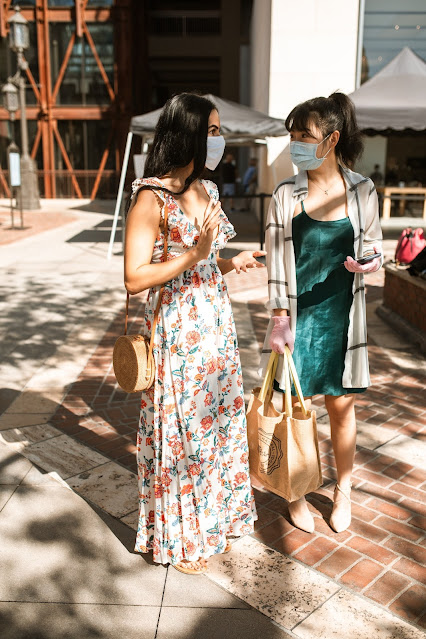A BRIEF HISTORY OF WEDDINGS: WHY DO BRIDES WEAR WHITE DRESSES
Weddings
have long been a momentous occasion, steeped in tradition and symbolism. One of
the most iconic and enduring images associated with weddings is the bride in
her white dress. The white wedding gown has become a symbol of purity,
innocence, and tradition. But why do brides wear white dresses? The history
behind this tradition is fascinating and dates back centuries.
The
tradition of brides wearing white dresses can be traced back to ancient
civilizations, although the concept of marriage predates recorded history. In
ancient Rome, brides wore white tunics, which were considered a symbol of
purity and youth. However, it wasn't until the 19th century that the white
wedding dress became widely popularized.
Queen
Victoria of England played a significant role in popularizing the white wedding
dress. In 1840, she married Prince Albert in a lavish ceremony wearing a
stunning white gown. Queen Victoria's choice of a white dress was seen as a
departure from the norm, as colourful gowns were the preferred choice for
brides at the time. Her decision to wear white had a profound influence on
Western wedding traditions and set a new trend.
Queen
Victoria's white wedding dress became a symbol of wealth and status. The white
fabric was expensive and difficult to clean, so only the wealthy elite could
afford to wear white dresses. The trend quickly caught on, and brides from
affluent families began to imitate Queen Victoria's choice. The white wedding
dress became a symbol of social standing and elegance.
The
association between white wedding dresses and purity has its roots in religious
and cultural beliefs. In Christian tradition, white is often associated with
purity, innocence, and virginity. Brides wearing white dresses were seen as
virtuous and chaste, ready to embark on a new life with their chosen partner.
The white dress also symbolized the bride's commitment to her marriage vows and
her dedication to a pure and faithful union.
As time went
on, the tradition of wearing white dresses continued to evolve. In the early
20th century, white wedding gowns became more accessible as textile production
advanced, making white fabric more affordable. The rise of bridal magazines and
fashion industry also contributed to the popularity of the white wedding dress.
Soon, it became the norm for brides of all social classes to wear white on
their special day.
While the
association between white wedding dresses and purity remains prevalent, modern
brides have started to break away from tradition. Many brides today choose
dresses in various colours and styles, reflecting their personal taste and
individuality. Ivory, blush, champagne, and pastel shades have become popular
alternatives to the traditional white gown.
The shift
towards more diverse wedding attire can be attributed to changing cultural
attitudes and the desire for self-expression. Brides now have the freedom to
choose dresses that reflect their personalities and celebrate their uniqueness.
The focus has shifted from conforming to traditional norms to embracing
individuality and personal style.
In recent
years, the wedding industry has witnessed a surge in non-traditional wedding
dresses, including bold colours, unconventional designs, and even pant suits.
This shift in bridal fashion has opened up new possibilities, allowing brides
to make a fashion statement and break away from the confines of tradition.
While the
white wedding dress continues to hold a special place in the hearts of many
brides, it is important to remember that the choice of attire is a personal
one. Whether a bride opts for a white dress or decides to embrace a different colour
or style, what matters most is that she feels comfortable, beautiful, and
confident on her wedding day.
In
conclusion, the tradition of brides wearing white dresses can be traced back to ancient civilizations but was
solidified by Queen Victoria's choice of a white wedding gown in the 19th
century. The white dress became a symbol of purity, wealth, and social
standing, and it has remained a popular choice for brides ever since. However,
modern brides are now embracing a wider range of colours and styles, reflecting
their own personal tastes and individuality. Whether white or colourful, the
most important thing is for the bride to feel radiant and special as she
embarks on her journey of love and commitment.




Comments
Post a Comment